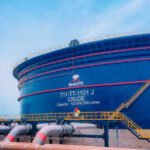The National Oil Spills Detection and Response Agency (NOSDRA) has shared its findings from the thorough investigation of the appearance of dead fishes along the Atlantic Ocean coastline in Nigeria, confirming the incident as a result of discharged toxic waste into the ocean.
Revealing the result of the investigation by the agency, the Director-General of NOSDRA, Idris Musa, in a statement confirmed that pollution consisting of heavy metals from industrial and domestic wastes discharged into the ocean was responsible for the high toxicity of the dead fishes and water samples taken.
NOSDRA headed the investigation which involved multiple agencies: the Nigerian Maritime Administration and Safety Agency (NIMASA), the Nigerian Institute of Oceanography and Marine Research (NIOMR), the National Environmental Standards and Regulations Enforcement Agency (NESREA), and the Federal Institute for Fisheries Research (FIFR).
In the statement regarding the findings of the investigation, Musa also said, ‘In the course of the analyses, Total Petroleum Hydrocarbons (TPHs), Polycyclic Aromatic Hydrocarbons (PAHs), Benzene, Toluene Ethylene and Xylene (BTEX) were within regulatory standard limits in water, sediments, and fish tissue analyses. However, there were some heavy metals such as cadmium, chromium copper, zinc and iron that exceeded regulatory standard limits in the coastlines of the three states of Delta, Bayelsa and Rivers’.
He disclosed that the values of cadmium and iron found in the samples taken were above the regulatory standards allowed. ‘The cadmium in the water was between 0.001 and 0.173 milligrammes per litre (mg/l) with an average value of 0.064 mg/l. This is above the regulatory limit of 0.05 mg/l as well as the control sample value of 0.08 mg/l. Similarly, the value of the iron content in the water in the area ranged between 1.914 and 3.408 mg/l with a mean value of 2.503 mg/l. This is above the regulatory limit of 1.00 mg/l’, he said.
Musa added that the values of chromium and copper in the sampled dead fishes’ tissue were slightly higher than the European Union standards limits, and that the harmful impact may be negative to aquatic species, other mammals and human beings.
Source: This Day
Photo source: Ria Tan






